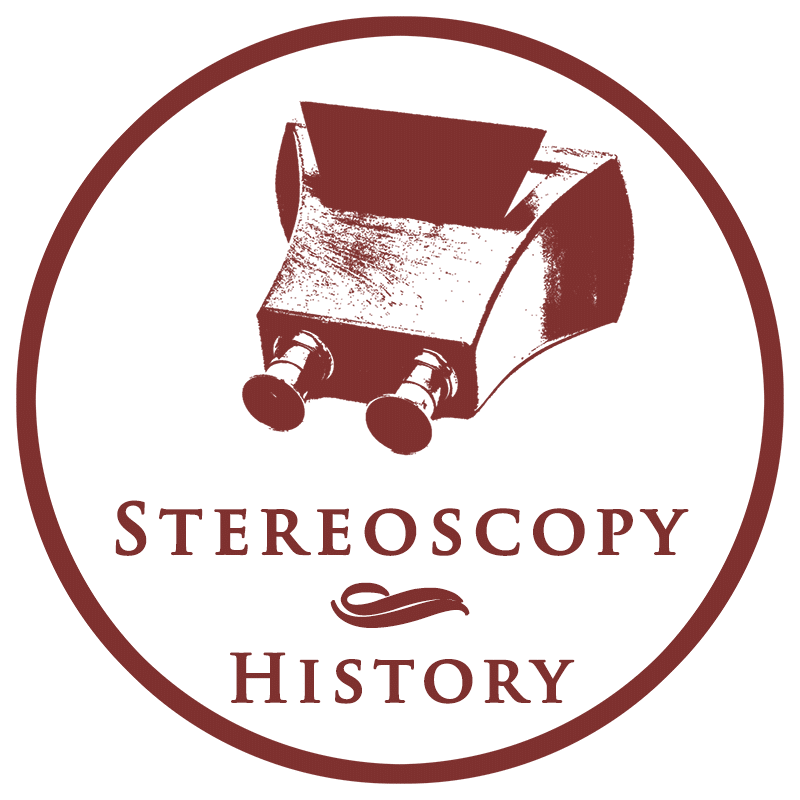
The Ernemann Universal Stereobetrachter is a folding stereoscope that supports different stereoview formats. Unfolded, it consists of two parts that are mounted on a base plate. The front panel contains the lenses and while focusing, the whole front panel moves forward or backward. The oblique viewing angle of the device makes it easier to position your eyes in front of the lenses.
A disadvantage is the small focus knob, which is partly built into the base plate. It contributes to the compact size of the viewer, but it makes focusing more difficult. The stereoviews should be placed behind a metal clip. Placing thicker glass stereoviews is somewhat cumbersome and you have to be careful not to scratch the glass slides. The stereoscope is more useful for viewing paper card stereoviews.

Specifications
| Manufacturer: | Ernemann, Dresden |
| Year of introduction: | 1908 |
| Year of manufacture: | 1908–c. 19251 |
| Type: | Tabletop |
| Viewer: | Single-view |
| Serial number: | None |
| Stereoview support: | Glass and paper card stereoviews |
| Stereoview format: | Multiple formats to 8.5 x 17 cm |
| Number of slides: | 24 |
| Lens focussing: | Yes |
| Inter-ocular adjustment: | Yes |
| Eyepiece blinders: | No |
| Dimensions (L x W x H): | 20.5 x 13 x 5 cm (folded) |
| Construction: | Mahogany |
Glossary: inter-ocular adjustment / single-view / tabletop
Ernemann
In 1889, Heinrich Ernemann formed together with Wilhelm Franz Matthias the Dresdner photographische Apparate-Fabrik Ernemann Matthias. Matthias left the company in 1891, and Ernemann continued the business activities alone. From 1899, the company was called Heinrich Ernemann, Aktiengesellschaft für Camerafabrikation in Dresden. The company only produced the wooden parts of a camera, the other parts were supplied by other manufactures. It switched to the production of complete cameras later, and Ernemann became a renowned manufacturer of photographic and film cameras. During the company’s lifecycle it produced a wide range of high-end cameras, but it also manufactured hand-held and tabletop stereoscopes.
The factory was located in the Striesen district of Dresden and was expanded in phases. The original building dated from 1898 and contained the mosaic Lichtgöttin (goddess of light). It was designed by the Art Nouveau painter Hans Unger. It was the famous trademark from 1903 to 1920. The factory was expanded with a central tower after the First World War. The buildings still exist today and the tower is now known as the Ernemann Tower. In 1926, Ernemann merged with ICA, Goerz and Contessa-Nettel to the new Zeiss Ikon company.
References
- Göllner, P. (1995) Ernemann Cameras. p. 235. ↩︎
